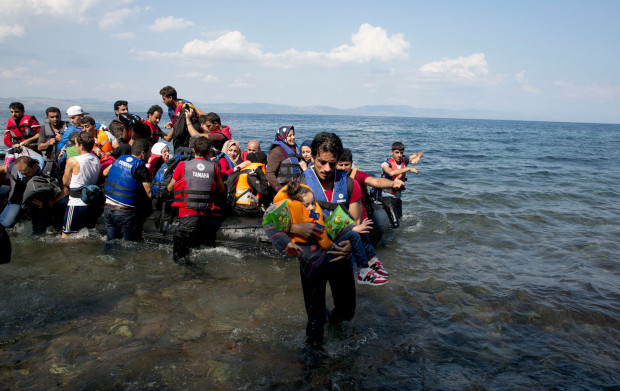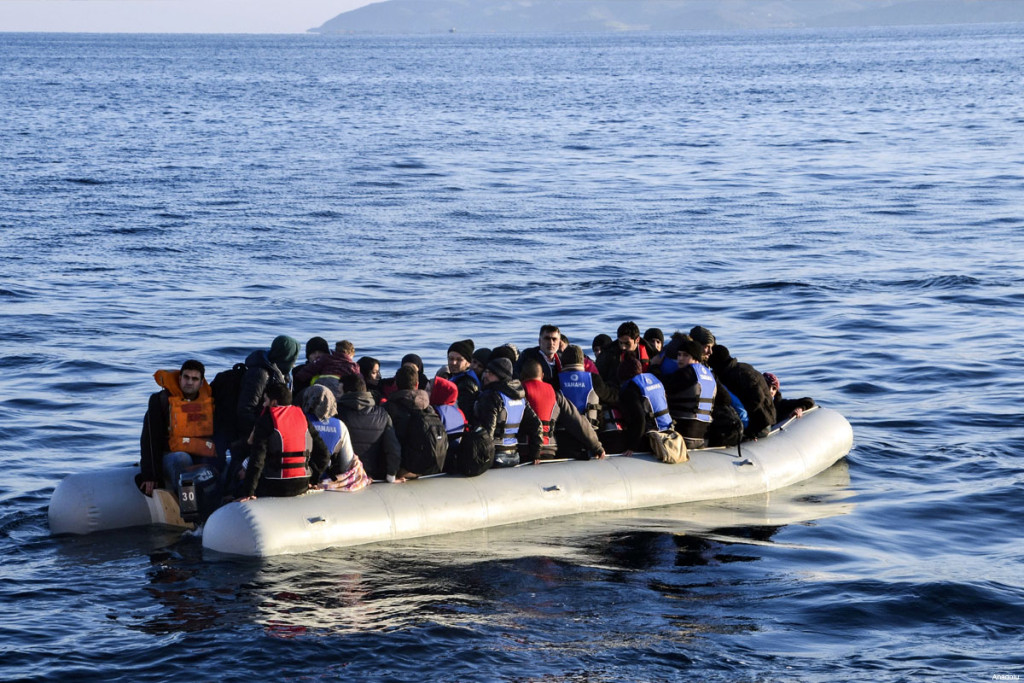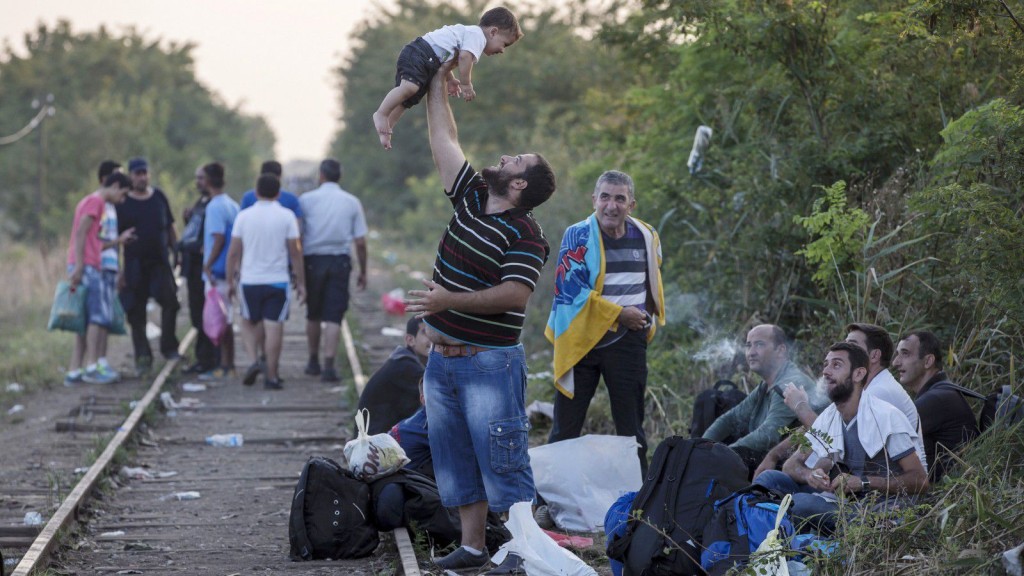The International Organization for Migration has just published the migration statistics for 2017, which includes the number of arrivals and migrants’ deaths throughout the world. A special attention can be paid to the number of refugees arriving through the Mediterranean, one of the most pressing problems in these last years. Although the numbers have improved slightly in comparison to 2016’s, they are still worrisome. As 2018 begins, this review should encourage us to create a better and more open world, where societies will be more tolerant and frontiers more porous.
IOM, the UN Migration Agency, reports that 171,635 migrants and refugees entered Europe by sea during 2017, with just under 70 per cent arriving in Italy and the remainder divided between Greece, Cyprus and Spain. This compares with 363,504 arrivals across the region through the same period last year.
Mediterranean Developments
IOM Rome reported Thursday (4 January) that, according to Ministry of Interior figures, 119,310 men, women and children arrived by sea as irregular migrants to Italy last year, the lowest total in four years, or since the Mediterranean migrant emergency began. IOM has been compiling arrival data across the Mediterranean since 2014.
IOM Athens’ Kelly Namia reported Thursday that over the last 12 days of 2017, the Hellenic Coast Guard reported at least 10 incidents requiring search and rescue operations off the islands of Lesvos, Samos, Chios and Rhodes. The Coast Guard rescued a combined 320 migrants and transferred them to these respective islands.
Namia said that a total of 795 irregular migrants entered Greece by sea during this same period, although on three of those days no migrants were detected entering. The busiest day of the period was New Year’s Eve, when 217 migrants came ashore on Samos and Lesvos. Christmas Eve was also busy; 177 migrants came ashore at Lesvos on 24 December, the second busiest day of the period.
Overall, 2,574 migrants entered Greece by sea during December, bringing the 2017 total on the Eastern Mediterranean route to 29,595. As with the Central Mediterranean route to Italy, this was the lowest total IOM has recorded in four years.
IOM’s Missing Migrants Project (MMP) has reported 3,116 deaths in the Mediterranean during 2017, not including at least two deaths recorded in late December, when one body was recovered on the coast of Libya and an 18-month-old child reportedly drowned off Turkey.
Deaths worldwide
Worldwide, IOM’s MMP recorded the deaths of 5,376 people during migration between 1 January and 31 December 2017. This total includes 128 migrant deaths recorded in 2017just in Pima County, Arizona. The Pima County Office of the Medical Examiner recorded159 deaths in 2016. Despite that lower figure, fatalities along the US-Mexico border remained high in 2017, with 369 recorded, or just over one per day. The total for 2016 was 396.
A total of 714 migrant deaths were recorded across the Americas in 2016, a figure that dropped in 2017 by 15 per cent to 607. One major factor in the drop: IOM has so far not recorded any confirmed fatalities during migration anywhere in South America in 2017 (compared with 32 in 2016) – despite receiving unconfirmed reports of Venezuelan migrants dying last year in accidents in Ecuador, Brazil and Chile. In the current crisis, Venezuelans consider each of those states destination countries, where many are able to enter through regular channels, without needing to use secret routes that often prove dangerous. That makes it harder to classify deaths en route as occurring “during migration,” especially if the migrants are traveling commercially, essentially as tourists mixing with the local population.
Over the last 12 days of 2017, the Hellenic Coast Guard reported at least 10 incidents requiring search and rescue operations
This past year also witnessed significantly less irregular movement across South America by Haitians and Cubans. That also may account for the drop in confirmed deaths. Haitians and Cubans, however, did perish in greater numbers in 2017 at sea. IOM recorded 156 migrant drownings in the Caribbean in 2017, compared with 105 in 2016.
At the same, other parts of the world proved more deadly than in previous years for people trying to migrate. IOM recorded more than triple the number of migrant deaths in Sub-Saharan Africa, where 387 men, women and children died in 2017, compared with 92 migrant fatalities in 2016. Southeast Asia also saw a rise – although not as sharp – to 298 deaths in 2017, compared with 187 in 2016. In the Middle East in 2017, IOM recorded 214 migrant deaths, an even 100 over the same period in 2016, when 114 migrant deaths were recorded (see chart below).
Europe also proved deadlier in 2017 than the year before – with 94 deaths recorded compared with 62 in 2016. During the days 21-29 December, four young men died while trying to migrate within Europe. Near Calais, France, a 15-year-old Afghan male was hit by a truck on 21 December, and an Eritrean man was crushed inside a truck on 29 December near that same location. On 27 December, a migrant in his twenties died when he fell off a vehicle on a motorway in southern France. On 28 December, the remains of a fourth migrant were recovered on the Greek side of the Evros River, which comprises the border with Turkey.
The global total of recorded migrant deaths for 2017 – 5,376 – is well below (by precisely one-third) 2016’s total of 7,932.
Nonetheless, IOM’s researchers caution that a number of global data sources – including local medical examiners, NGOs and police departments – have yet to produce reports with total numbers of migrant fatalities for 2017. That means the number of recorded migrant deaths in 2017 is likely to increase.
One migrant death has already been recorded by IOM in 2018. On 3 January, a man who had drowned trying to cross the Rio Bravo from Mexico into the United States was recovered near Tamaulipas.
Missing Migrants Project data are compiled by IOM staff but come from a variety of sources, some of which are unofficial. To learn more about how data on missing migrants are collected, click here.
For more information, click here.




















No Comments